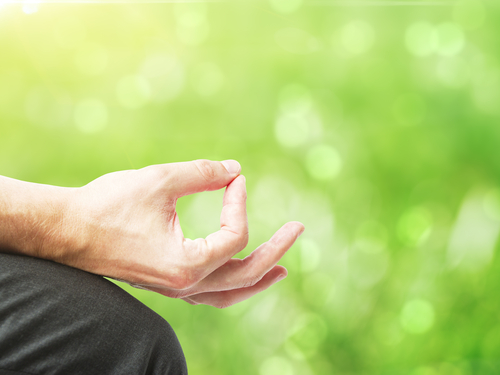How to do Meditation
“Meditation is not just for relaxation; its primary purpose is to develop the capacity to respond skilfully and gracefully to lifeʼs difficulties as well as its joys” Shyalpa Tenzin Rinpoche
Preparing for the meditation
It is essential to feel comfortable when you learn how to do meditation. So wearing loose clothing, removing your shoes and being in a warm, comfortable sitting position are all conducive to good meditation. Pick a comfortable location where you are not going to be disturbed or interrupted. Turn off electronic devices. Think about lighting. it is a good idea to dim or mute the lighting. Lighting a candle can set the atmosphere perfectly.
It is not essential to adopt the classic lotus or half lotus position of sitting cross legged on the floor or a prayer or yoga mat. Many people prefer to sit on a chair with the feet firmly placed on the ground and with the hands on their laps especially anyone with a bad back. Some yoga mats are designed with built-in cushions to provide proper lumber support or plan mats can be enhanced with cushions placed below the lower back. Seating positions for meditation is another massive topic in itself.
A lot of people burn incense sticks and they are wonderful for clearing negative energies in a room. White sage is particularly space cleansing and is sold in convenient cones.
Some people use a burning candle flame as a point of focus and to assist in clearing fleeting thoughts.
Most advanced practitioners say that music is a distraction unless the music is the subject of the meditation or unless you are listening to a guided meditation where music creates the perfect atmosphere and backdrop for the words of guidance.
How to do meditation : Breathing
Breathing correctly is key to learning how to meditate successfully. Breathing needs to be deep and slow. You should breathe into your abdomen and not into your chest or throat. After inhaling deeply as deep as you can, hold that breath for a few seconds before exhaling slowly and gently. Be conscious of the whole process of breathing. Breathing can be a meditation in itself with the mind focusing on the gentle process of breathing or it can be a precursor to the actual meditation itself. There are a huge amount of benefits to deep breathing. So this is another marvellous side-benefit of daily meditative practice.
How to do meditation: Hand position

Most images show the meditating person with both his hands in the classic hand position with the hand balanced on the knees with the thumb tip touching the middle fingertip in a perfect bridge.
The hand position is known as the "mudra" taken from the Sanskrit word meaning "seal" "mark" or "gesture. The mudra has significance in both the Hindu and Buddhist religions. In yoga practice, mudras are used in conjunction with pranayama (yoga breathing practice). The whole area of mudras is vast and you may find the book shown below useful if you wish to explore this in more detail. Suffice to say for the beginner, whilst you may be happy to emulate the mudra shown in the image above, it is equally satisfactory to rest your hands face down on your lap in a comfortable position.
How to do meditation: Clearing the mind
Many beginners to meditation expect that magically when they start to meditate, all outside thoughts will disappear and a pure clear mind will emerge ready to begin deep calm and peaceful meditation. The reality is that it is extremely difficult to cease the endless chatter of our minds. The average person has 50,000 to 70,000 thoughts per day that works out at 35 to 48 thoughts per minute. It is unrealistic to imagine for minute that we could stop this extraordinary process whilst we meditate. The best approach is to initially focus our attention on the deep breathing process and actually say to yourself I am breathing in, I am holding my breath and now I am breathing out. Another way to stop the thought process is to focus on it. Say to yourself "and my next thought will be". Putting the spotlight on the process seems to make it freeze in the headlights and disappear. The best way to deal with those mundane thoughts which creep into our minds whilst meditating is to imagine they are like clouds which are drifting into our consciousness and to gently usher them away with a mental breath and send them on their way. As you become more practised you will find that these nagging thoughts (what am I going to cook tonight, how am I going to pay that bill, what does my mother want for her birthday, when am I going to get time to buy that dress for the ball on Saturday) will only make appearances as we get absorbed in the meditation process. There is no point getting stressed because these thoughts appear. This is not a battle but a gentle process of relaxing into the ideal meditative state.
New! Comments
Have your say about what you just read! Leave me a comment in the box below.